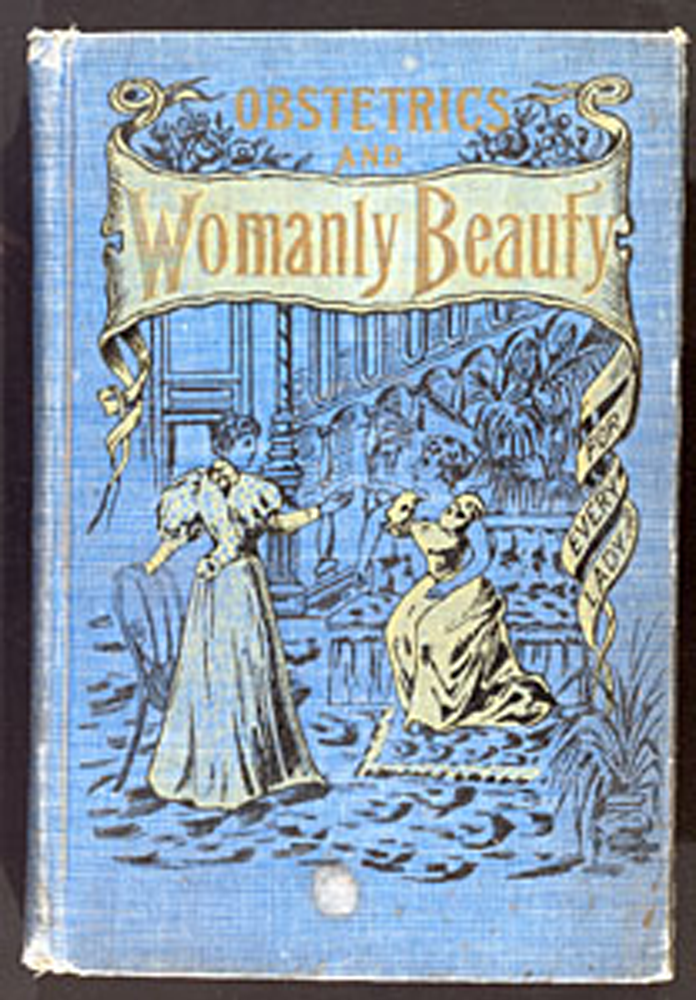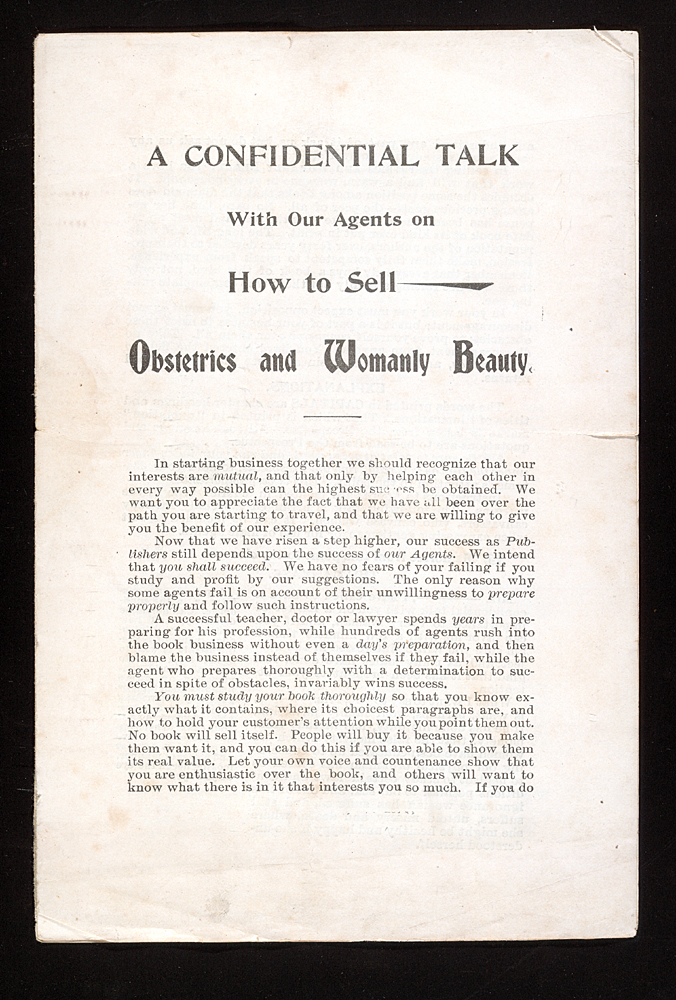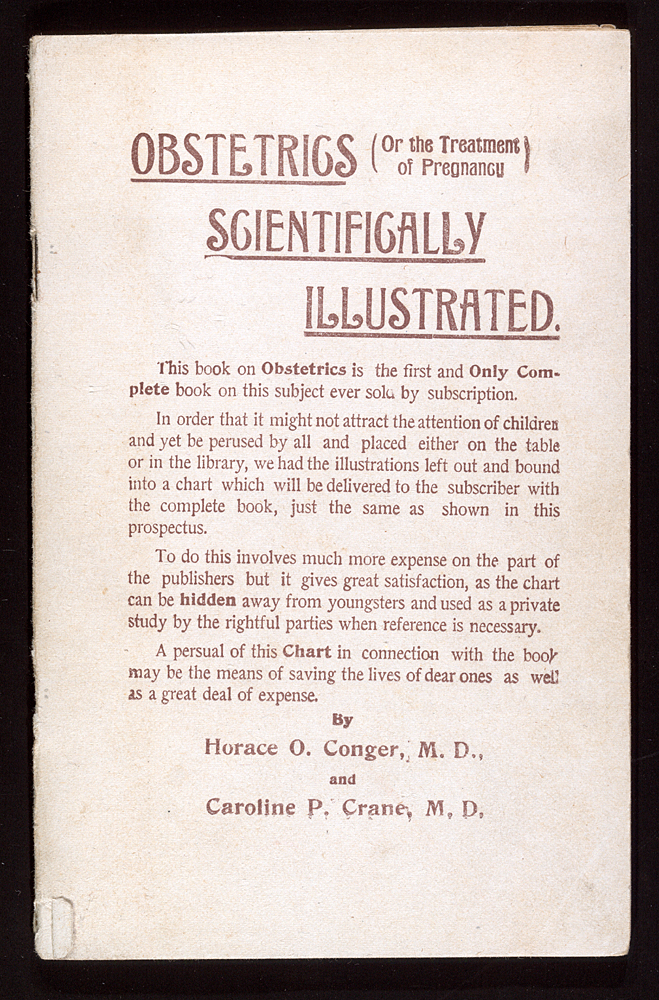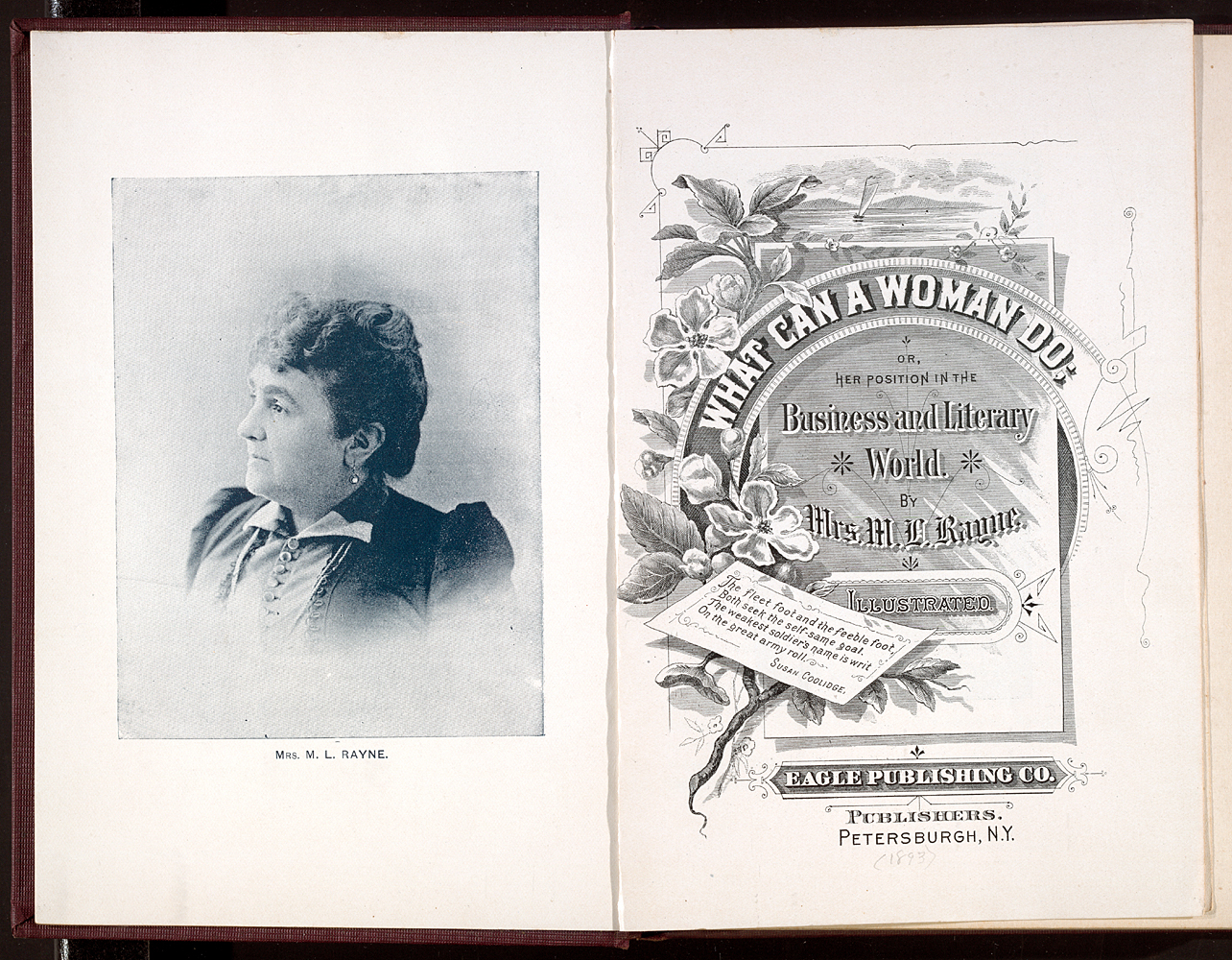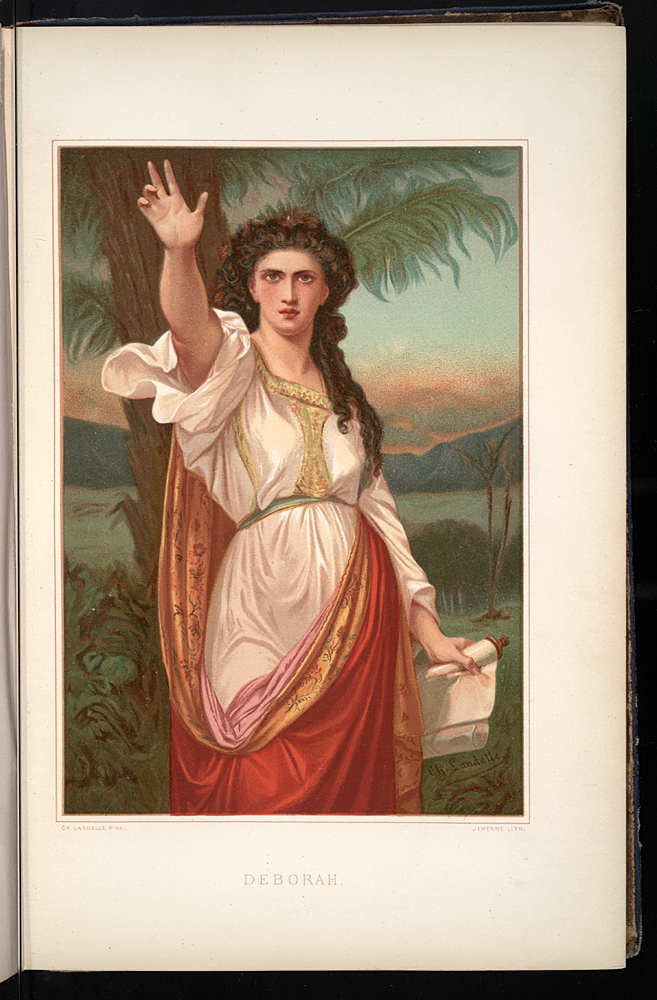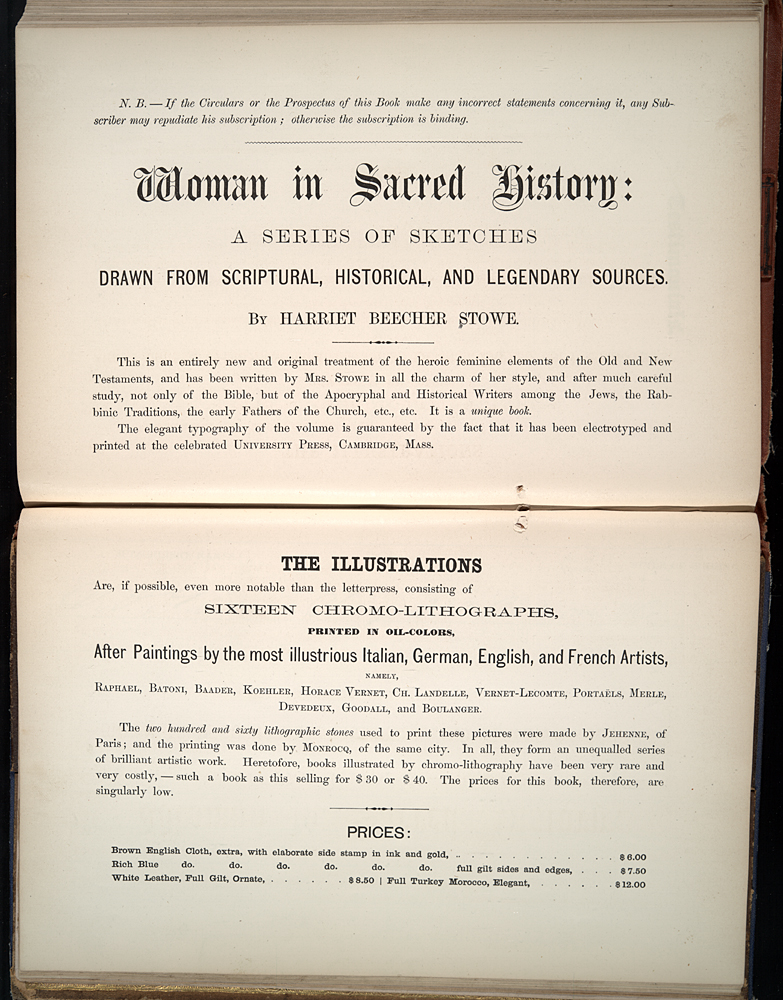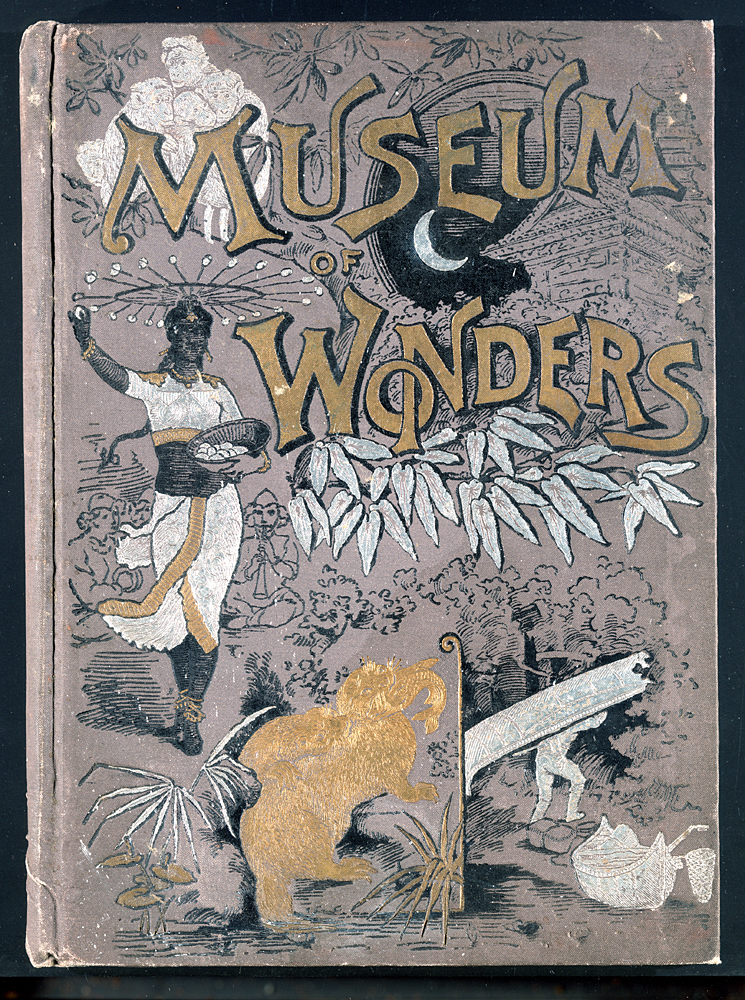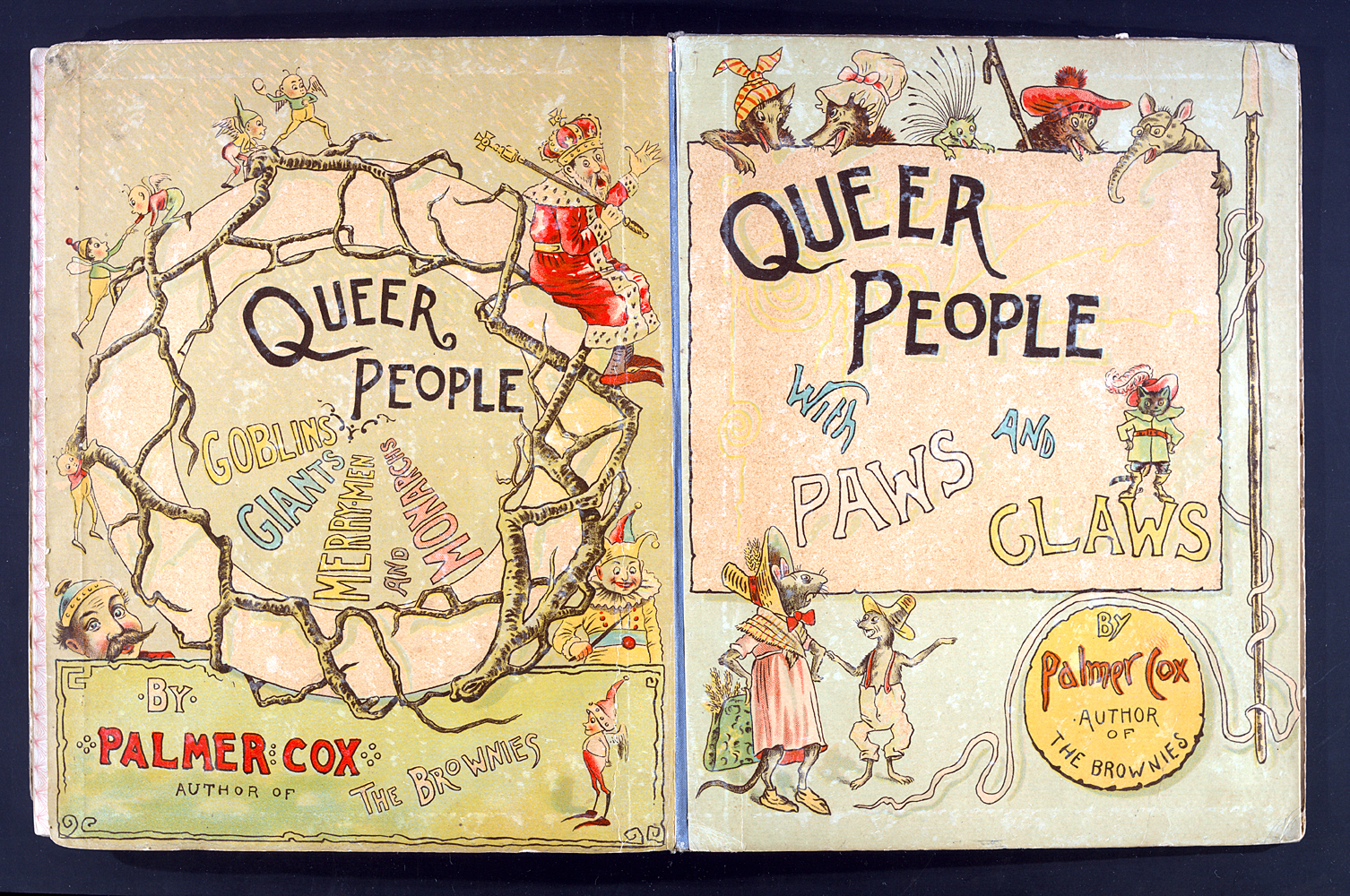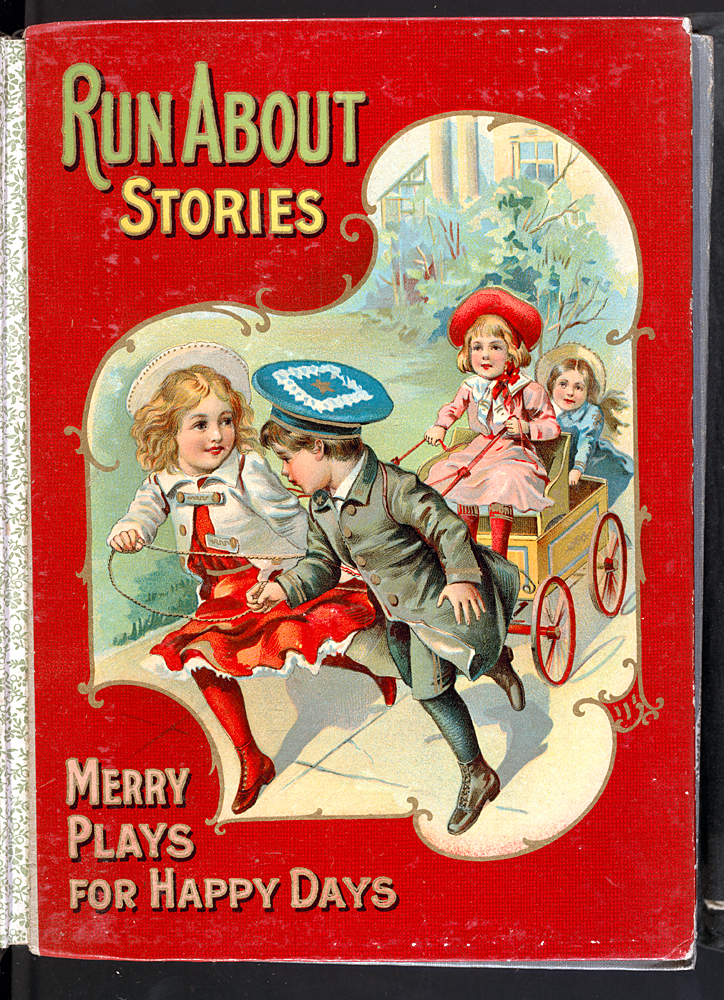Fig. 1 - Fig. 3: Clearly, women were the audience for this particular work. Its associated "how to sell" pamphlet even assumes the book's agents to be women. The agent is warned to make certain that the work is not mistaken for a "medical book," which would dampen sales, but one that concerns "practical obstetrics," previously unavailable for purchase. Fitted into a pocket in the back of the canvassing book is a booklet of obstetric illustrations, separately printed so to be safe from a child's prying eyes.
"A Confidential Talk With Our Agents on How to Sell Obstetrics and Womanly Beauty" is a pamphlet loosely enclosed; "Obstetrics (Or the Treatment of Pregnancy) Scientifically Illustrated" is a pamphlet for the purchaser, not the agent, and is enclosed in a pocket in the volume's back cover
Fig. 4: Rayne's book of encouraging advice for women reflects its period, when many women were seeking and finding employment outside the family farm or business. Evidently, her book found a following. One copy in the Zinman Collection contains the names of one hundred and ten subscribers, all of them women.
Fig. 5 - Fig. 6: Stowe's sketches, based on scriptural, historical, and legendary sources, was one of the best selling subscription books J. B. Ford published. In fact, once Stowe had added her titles to its list, the publisher, which had brought out books by various Beechers, advertised itself as "Printers and Publishers to the Beecher Family." The author of Uncle Tom's Cabin and her literary and religious writer-relatives constituted, all by themselves, a kind of "sub-market." Years later, when the market for Women in Sacred History seemed exhausted, Stowe condensed it. Renamed Bible Heroines, the book had a second life in the bookstores. The chromolithographs of the various heroines, based on paintings by notable artists, are all gathered at the beginning of this canvassing book. They would have been a major selling point, emphasized in the sales pitch to all interested parties.
Fig. 7: Northrop reflects a modern sensibility towards children's literature, replacing purely didactic works with those that seek to make learning enjoyable. He writes that "[t]o afford entertainment and instruction to the young is always a pleasure. Their eyes and ears are open; they are eager for new thoughts and new scenes; their minds are on the wing, ready to visit every clime; and none appreciate as they do the marvels of the world." His work gathers poetry, stories, and tales of nature and history, all embellished with numerous illustrations.
Fig. 8: Palmer Cox, an extremely popular writer of children's literature, was best known for The Brownies. Wee, fairy-like creatures that resembled little garden gnomes, his anthropomorphic creations received critical acclaim, as evidenced by the commendations printed in the canvassing book. The National Baptistproclaimed it "pure and healthful, besides being charmingly interesting and amusing." This example is one of only a few canvassing books in the Zinman Collection intended to sell only one children's title. Its publisher also issued this title as a set of "three volumes for the convenience of purchasers." The covers shown here are the covers for two of the volumes.
Fig. 9: Combination canvassing books were used primarily to sell children's books. Appearing first in the 1890s, they continued well into the twentieth century. The range of ages and subjects covered by these books permitted them to contain something for just about any child, and occasionally for adults, as well. They often appear to have been marketed during the holiday season; some publishers even refer to them in their prospectuses as "holiday books." Some titles might have made for interesting children's reading. Others, however, obviously reflect the kinds of books that adults consider to be appropriate for youngsters. Books published for children by the various Bible publishing houses look likely to have been exceedingly dull.
The canvasser's volumes also contains subscription materials for Great American Men and Women for Little American Boys and Girls; Jesse Hurlbut, Stories from the Old and New Testaments; Charles Morris, Young People's History of the World for the Past One Hundred Years; and The Standard Library of Instructive Literature and Wholesome Amusement
Which exhibit?
Page: Featured item
Short name for this entry
Women and Children
Order on exhibit page
1
Turn off the details link on the exhibit page
On
Exhibit sub-tab
